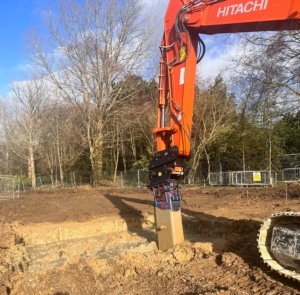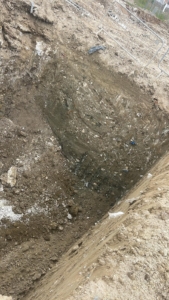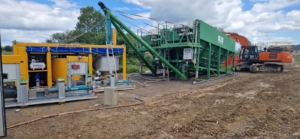CASE STUDY
Client: Jackson Civil Engineering
Project: Lyminster Bypass
Deep Soil Mixing Ltd has successfully completed its ground stabilisation project for client Jackson Civil Engineering, to contain and improve the contaminated soil and ensure the safe construction of Lyminster Bypass.
Part of a road building scheme, delivered on behalf of West Sussex County Council, the construction involved the northern 1.1km section of a bypass of the A284 Lyminster Road to go round Lyminster village. The new road links to the existing A284 at approximately 600 metres south of the A27 at Crossbush to provide access to Littlehampton and Bognor Regis.
Working closely with Jackson’s, Deep Soil Mixing Ltd was able to create mass soil mixed cells that contained all the waste contaminants within the material, both resolving the issue of site contamination and strengthening the soil to enable the construction of the road.
The Solution
The site soil for the new bypass was extremely contaminated. This was due to housing a former plant nursery which left tonnes of rope, netting, plastic, glass, metal, and other waste contaminants.
Deep Soil Mixing Ltd created mass soil mixed cells that contained all the waste materials within the mix, to stop any risk of contamination and to strengthen the properties of the soil.
The solution was the most cost-effective, as the alternative was estimated to cost considerably more to remove the contaminated land and replace it with good quality soil. Furthermore, this deep soil mixing option was more environmentally friendly too.
Mass soil mixing on-site meant the existing soil did not need to be removed from site and replaced, saving time and money, and keeping the carbon footprint of the project to an absolute minimum.
Soil mixing also improves health and safety on site with less vehicle movements compared to an excavate and cart away solution.
Instead, mass soil mixed cells were created from existing chalk sub-strata up to the required levels for the formation of the road.
The Project
Designed to reduce traffic congestion through Wick and Lyminster and linked to the provision of 1,260 new homes and 700 new jobs, the bypass should improve the safety and accessibility for the A284 and surrounding roads and contribute to the redevelopment in the Littlehampton and Bognor Regis areas.
The new bypass links to the existing A284 just south of the A27 at Crossbush, the northern section is 1.1km long crossing 2 watercourses with a viaduct and a culvert.The road is 7.3 metres wide, single carriageway with a verge on one side and a footway/cycleway on the other.
An existing bridleway will be maintained with a Pegasus crossing to ensure the safety of pedestrians, cyclists and equestrians.
As part of the building scheme in West Sussex, a new viaduct has been built over Black Ditch to ensure there is no increased flood risk to the area and as part of the proposals and, The Environment Agency approved the soil mixing proposals.
What are the benefits of using soil mixing?
Environmentally Friendly & Economical: Natural resources are spared as existing soil is used as aggregates. Many forms of contaminated ground can also be mixed which reduces transportation of raw materials to landfill. The use of soil mixing can also reduce construction programme and reduces carbon footprint with less vehicular movements.
Flexible: Effective on different soils, including soft soils, flood plains, contaminated land, peat, silts and alluvium etc. Flexibility also in design and application as well as installation of the soil mix not being affected by the weather. The final cured product can also be shaped, benched or battered to suit.
Reduces Construction Programme
Improved health and safety due to less vehicle movements on site
Reduced Vibration: Soil Mixing induces very low vibrations, which reduces the potential impact to nearby utilities. The equipment does not exert any lateral pressure when mixing we can work as close as 200mm from the building/foundations
Increases bearing pressure, controls settlement and reduces permeability.
Wide range of soils can be treated compared to other solutions
No need to bring costly and bulky materials on site







